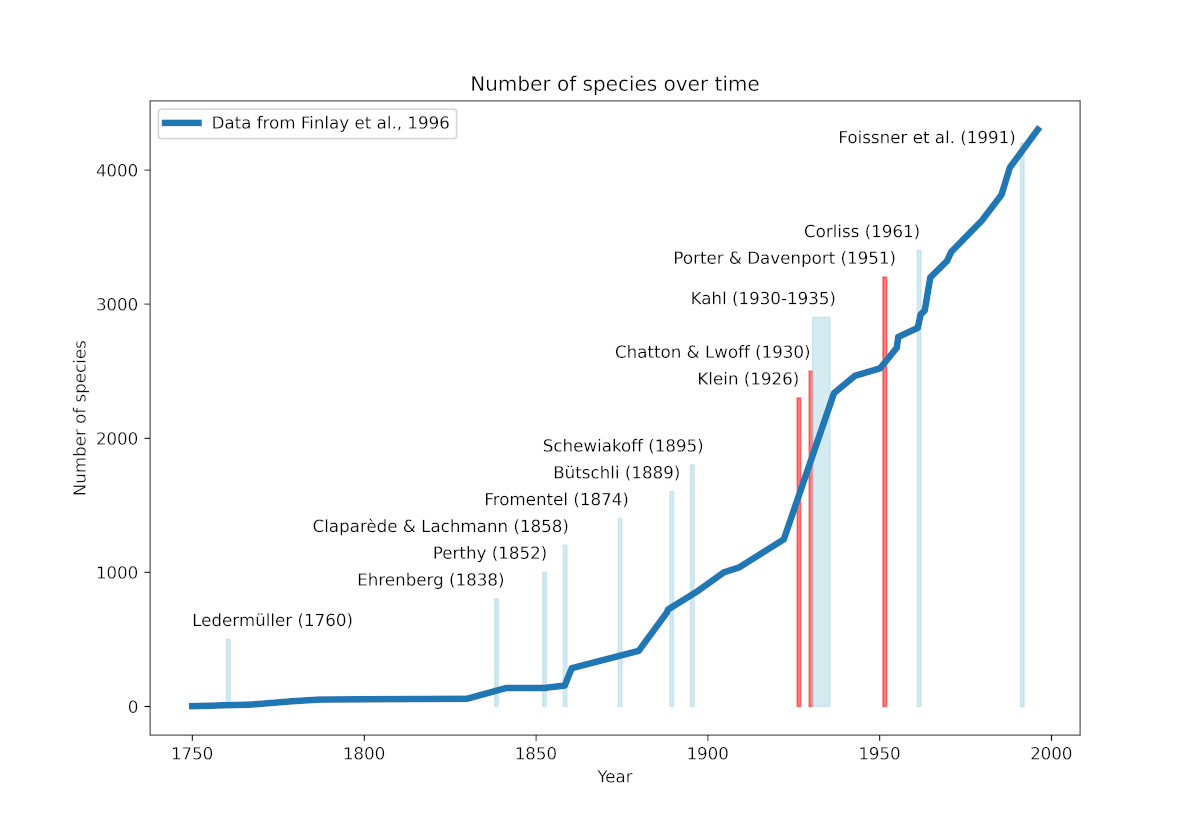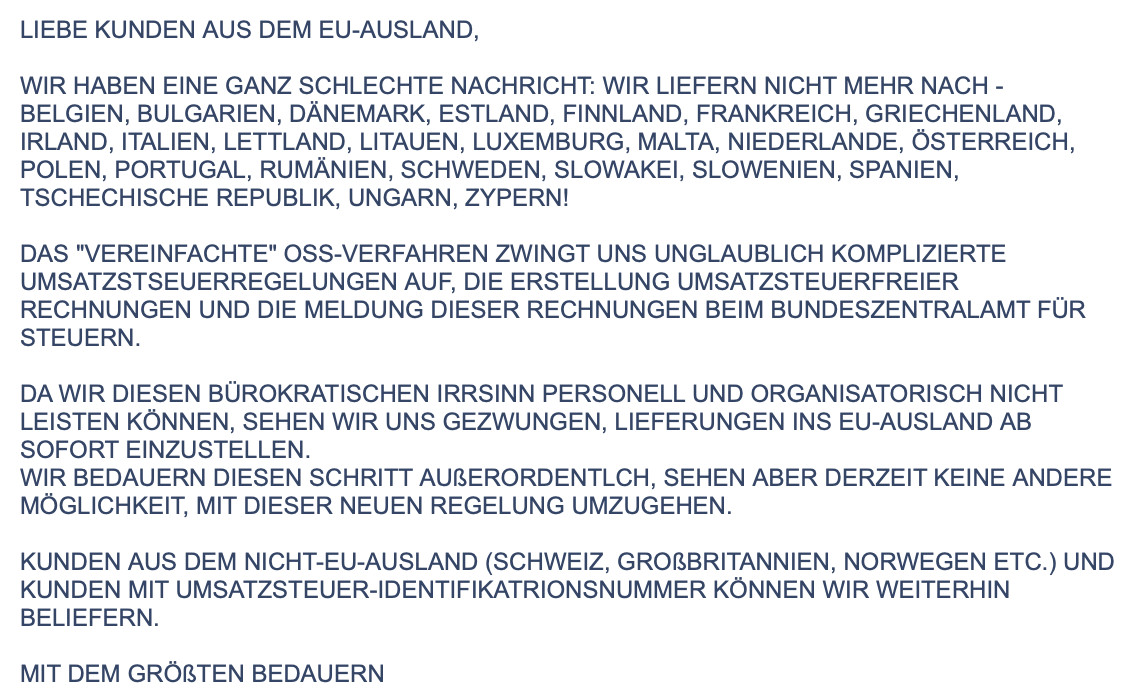I started amateur microscopy in the late 1970ies of the last century. My first microscope was a Christmas gift provided by my parents. Later I started digging deeper into microscopy staining and preparation techniques. At this time any sort of chemicals required for this purpose were freely available at the local drugstore. The owner of the drugstore close to where I lived, asked my parents about what I want to do with the chemicals that I ordered from my sparse pocket money. It was easy to get permission to buy color staining powders, alcohol or mounting media, like canada balsam, that are required to create permanent slides from plant and tissue sections or microorganisms. My parents confirmed, that I'm doing amateur microscopy and biology studies at home.
Historic contributions of amateurs
Certain important contributors in science historically have been and still are avid amateurs. Alfred Kahl, a teacher doing ciliate research in his private life in years 1926-1943 is a good example. It is not known, when and where he died. Any suggestions or hints about Alfred Kahls final years are welcome, by the way.
The number of ciliate species detected has been doubled at the time he published his work. Alfred Kahl published four books containing 3.407 illustrations plus a few scientific articles providing detailed information about some of the newly described species. Many of the new descriptions were provided by Alfred Kahl himself for the first time. In recent years the number of redescriptions referring to Alfred Kahls previous work is significantly increasing and adds new confirmed species to present ciliate research. His contribution caused a sound impact until today. Alfred Kahl used simple drawings from microscopic live observations for documentation. He also mentioned that he used certain chemicaly, like methyl green to stain nuclei of the ciliate he observed. Nowadays, ciliate research does no longer accept bare visible observations for good reasons: They are imprecise and proven to be hardly comparable or reproducible from the broad literature in ciliate research. At the same time Kahl did amateur work, Klein introduced silver staining techniques to obtain permanent slides from the ciliate species. Chemical treatment to obtain permanent slides is required also for amateurs to provide species holotypes for museums. The necessity and willingness to apply such staining techniques on amateur levels directly leads to increasing restrictions of availability.
Figure 1: Number of ciliate species discovered world-wide with annotation when primary authors lived or influenced ciliate research. When amateur microscopist and teacher Alfred Kahl reported his observations, the number of species discovered almost doubled. Authors marked red, like Klein, Chatton & Lwoff or Davenport didn't contribute many new species, but introduced modern silver impregnation techniques for the first time. The total number of species estimated less by Finlay et al. (1996) gives lower number of species, because certain amount of species descriptions are regarded incomplete or not valid at all. But still there are many "invalid" species rediscovered and redescribed using modern techniques. This will increase the final count presented here.
EU regulations regarding trading chemicals
Young people are enthusiastic amateur scientists to explore the world in fields of astronomy, microscopy, chemistry, electronics or physics. My early self-education in the years of scholarly education opened a wide field playing around with nature sciences. The limit was the sky and my pocket money. Luckily, my parents didn't stop me at any point. In contrast, they supported my personal development. This again influenced my choice of occupation. Today I'm working in data science fields in industry. However, I have strong doubts that the current young generation may follow such a path, simply because they are not allowed to do some of the same things, that I was able to get hands on.
Around 2013, I rediscovered my old hobby, amateur microscopy and bought a new microscopy. Originally it was intended to find some "bad weather astronomy", which is still my other hobby. However, things changed during the same decade in a short time frame. Year by year chemicals became more and more unavailable from e-commerce platforms. Sellers stopped delivering chemicals to private persons. Even pharmacists started to refuse to sell pure chemicals to private persons. The main reason are new regulations within the European Union that limit trading of chemicals. Additional effort to risk declaration for companies selling chemicals arises from additional required documentation. Such effort increases year by year. The impact is strong and consequences are not transparent to people.
Many chemicals suddenly appear forbidden to private persons. One major goal of the restrictions implemented is prevention of terrorism. Funny enough to see, the exact same regulation explicitly state that authors of the paper knew that these limitations are not effective to prevent terrorism. Nevertheless, these regulations are in place and prevent private people from buying chemicals that were freely available before. I'm not only talking about a small international community of crazy people having a funny hobby. Even chemistry experimentation boxes, that are offered as toys to children to start exploration of chemistry and nature science become more and more restricted.
A friend of mine recently published two books about the history of experimentation boxes offered in eastern and western Germany. Leder K and Kainka B., 2023: "Geschichte der Experimentierkästen, Elektrizität, Chemie, Optik, Mechanik und Biologie". The book describes the history and development of experimentation boxes offered by companies like Kosmos (Stuttgart), Schuco (Fürth) and also experimentation boxes that were offered in the former German Democratic Republic and Russia. It is pretty obvious the contents of current experimentation boxes became pretty limited, which is sound impact on education of the young generations.
As if this wouldn't be enough, there are further impacts on education.
Impacts on education
When I conduct educational workshops or give a talk about microscopy to teachers, almost always some teachers tell me they are scared about the educational development and in certain cases already conducting experimentation in chemistry or microscopy at school. Asking about reasons people reported me extra effort required to documentation and risk declaration of chemical experiments. Extra effort adds to common preparation of educational work in MINT fields of education, which they simply cannot handle because of time limitations. More and more chemical substances are forbidden to be used at school, like certain color stains used in microscopy. The fast changing situation about which substances are still allowed (or not) and the circumstances and necessary documentation seems unclear at any time. Teachers are getting more and more frustrated about this situation. Their primary job is to bring knowledge to young people, not documenting chemistry and risk management. They also refuse to take consequences, if an experiment may accidentally fail. However, probability to fail is a natural property of any experiment in science. On the other hand, there is not even a single microscopist known or confirmed who died from using congo red stain in microscopy. The stain now is suspected to be carcinogenic, thus forbidden at schools and related educational experiments are no longer possible. This is just one of the many examples, that I was told by the teachers which I met in the past decade. Teachers tell me they see the impact of not conducting such experiments. This will certainly have serious consequences to education of the young generation.
Freedom of trading?
Another topic came into my mind for the first time when visiting and talking to my friends doing amateur microscopy in Austria, the Netherlands or Switzerland. European government regulations about value added tax have an impact on the trade of goods between European countries in some funny ways. This is not limited to chemicals, but affects trading of all goods within the EU. In 2015 the European government decided that value added tax no longer will be declared in the country of origin. Instead, value added tax needs to be declared in the country of destination. The added effort of tax declaration rises with the number of the countries into where these goods are delivered. This is like having reinvented and implemented complex "customs" declaration once more. Additional costs and human resources, like extra costs for tax consultants, need to be taken into account for the additional effort to tax declaration. Such costs are multiplied with the number of countries of destination plus keeping track of varying and different value added taxes in the destination countries. Small companies started refusing to accept the extra effort required for the complex tax declaration, as it lowers their revenue and because of time considerations. These companies no longer deliver goods into other EU countries. The observed effect is contradictory to any EU statement of freedom of trading, where it is claimed that no person should be handicapped, because he or she lives in a different European country. This is a really boring development within the European Union.
Figure 2: An open letter to the customers of a German seller of natural cosmetics, chemicals and stains used in microscopy.
Concluding remarks
How to get from an amateur microscopist to a suspected terrorist? In Europe it's easy: Just sit there and see what happens. It will literally happen overnight. The level of trust of European and national governments in its citizens shall be a concern. Increasing bureaucracy in the EU and on national levels tend to perfect nonsense. Observed effects are contradictory to statements and high hopes about educational excellence and free trading. While still claiming the freedom of choice of occupation, counterproductive effects arising from regulations and interdictions take away this freedom from people. Especially the young generation is seriously affected by increasing limitations in education or self-education. Instead of lowering regulatory overhead, a contrary tendency holds true. I'm wondering how politicians think the EU may survive in fields of education, science and engineering fields under these circumstances and effects observed.
Over centuries Europe was a historic place of innovation and discovery. Avid amateurs, private persons took part of the scientific journey. However, things have changed in a very short time. People are getting frustrated due to bureaucracy, restrictions and interdictions. It is proven these restrictions not only affect possibilities to continue with amateur science. It is a large impact in education and self-education in general.
Don't take me wrong. I'm a big fan of the European idea. However, what is currently happening to limitations in education and freedom of people, is not anything I ever expected to happen. Just thinking loud about the future of education, science and the freedom of choice in Europe.
I'll leave it to the reader to think about consequences and countermeasures.
Literature
Leder, K. and Kainka, B, 2023: Geschichte der Experimentierkästen. Elekrizität, Chemie, Optik, Mechanik and Biologie. ISBN 9798392675470.


